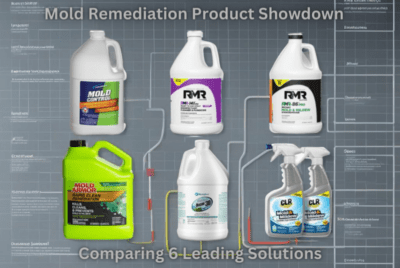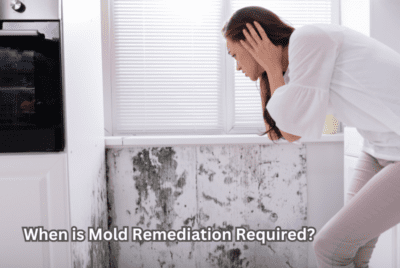Air Purifier vs Dehumidifier: Choosing the Right Solution for Clean and Healthy Indoor Air
As a mold remediation enthusiast and advisor, I understand the importance of maintaining a clean and healthy indoor environment. One common concern for many individuals is whether to invest in an air purifier or a dehumidifier. In this article, I will discuss the differences between an air purifier vs a dehumidifier and provide helpful suggestions on which one might be more suitable for your needs.
1. Introduction
When it comes to improving indoor air quality and creating a comfortable living space, both air purifiers and dehumidifiers play vital roles. While their primary functions differ, they serve unique purposes in enhancing the overall indoor environment. Understanding how they work and their benefits will help you make an informed decision.
2. Understanding Air Purifiers
2.1 How do Air Purifiers Work?
Air purifiers are designed to remove various contaminants from the air, including dust, pollen, pet dander, mold spores, and other airborne particles. They utilize filters or purification technologies such as High-Efficiency Particulate Air (HEPA) filters, activated carbon filters, or electrostatic precipitators to capture and trap pollutants.
2.2 Benefits of Air Purifiers
Air purifiers offer several benefits, such as:
- Improved indoor air quality by reducing allergens and pollutants.
- Allergen relief for individuals with respiratory conditions like asthma or allergies.
- Elimination of unpleasant odors from cooking, pets, or smoke.
- Enhanced sleep quality and overall well-being.
3. Understanding Dehumidifiers
3.1 How do Dehumidifiers Work?
Dehumidifiers are devices that regulate humidity levels by extracting excess moisture from the air. They work by drawing in moist air, cooling it to condense the moisture, and then releasing dry air back into the environment. This helps prevent excessive moisture buildup, which can lead to mold growth and other issues.
3.2 Benefits of Dehumidifiers
Dehumidifiers provide various benefits, including:
- Mold prevention and remediation by controlling moisture levels.
- Reduction of musty odors caused by high humidity.
- Prevention of condensation on windows and walls.
- Protection of furniture, electronics, and other possessions from humidity-related damage.
4. Air Purifier vs Dehumidifier: Which is Right for You?
Now that we understand the basic functions and benefits of air purifiers and dehumidifiers, let’s compare them in different aspects to help you determine which device suits your specific needs.
4.1 Mold Prevention and Remediation
If you are dealing with mold issues or reside in a humid climate, a dehumidifier should be your priority. By reducing excessive moisture, dehumidifiers inhibit mold growth and help remediate existing mold problems.
4.2 Allergen Control
Both air purifiers and dehumidifiers contribute to allergen control, but they target different sources. Air purifiers are effective at capturing and removing airborne allergens such as pollen, dust mites, and pet dander. If you suffer from allergies or have respiratory conditions, an air purifier can help alleviate symptoms by reducing the presence of these irritants in the air.
On the other hand, dehumidifiers indirectly help with allergen control by reducing humidity levels. High humidity creates an ideal environment for allergens like dust mites and mold to thrive. By keeping humidity in check, dehumidifiers limit the growth and spread of these allergens, providing relief for allergy sufferers.
4.3 Humidity Control
One of the primary functions of dehumidifiers is to regulate humidity levels in indoor spaces. If you frequently experience excessive moisture, condensation on windows, or a damp feeling in your home, a dehumidifier can be highly beneficial. By extracting moisture from the air, dehumidifiers help maintain optimal humidity levels (usually around 40-50%), creating a comfortable and healthy living environment.
While air purifiers do not directly control humidity, they can indirectly contribute to reducing moisture-related issues. By removing pollutants and allergens from the air, air purifiers can help improve indoor air quality, which is especially important in humid environments where mold and mildew thrive.
4.4 Energy Efficiency
When comparing air purifiers and dehumidifiers in terms of energy efficiency, it’s important to consider their specific models and features. Generally, air purifiers consume less energy compared to dehumidifiers. Air purifiers with HEPA filters or energy-saving modes are designed to operate efficiently while providing effective air cleaning.
Dehumidifiers, on the other hand, require more energy to run, especially if they have powerful moisture-extraction capabilities. However, modern dehumidifiers often come with energy-saving features like adjustable humidity settings, timers, and sensors to optimize energy usage. It’s important to consider the energy efficiency ratings and features of specific models when making a decision.
4.5 Noise Levels
Noise levels can be a factor to consider, especially if you plan to use the device in your bedroom, office, or other quiet spaces. Air purifiers generally produce minimal noise, especially those equipped with silent or sleep modes. You can enjoy clean air without significant disturbances.
Dehumidifiers, on the other hand, tend to generate some noise due to the operation of their compressor and fan. However, many manufacturers now produce quieter dehumidifiers with noise reduction technologies. If noise is a concern, look for dehumidifiers with lower decibel ratings or features like “whisper-quiet” operation.
5. Conclusion
In summary, both air purifiers and dehumidifiers play important roles in creating a healthy indoor environment, but their functions and benefits differ. If you are primarily concerned about mold prevention and remediation, as well as controlling humidity levels, a dehumidifier should be your priority. On the other hand, if you are more focused on improving overall air quality and reducing airborne allergens, an air purifier may be the better choice.
Ultimately, the ideal solution may involve using both devices in conjunction, depending on your specific needs and the conditions of your living space. Consult with a mold remediation professional or an indoor air quality specialist to assess your requirements and make informed decisions.
FAQs (Frequently Asked Questions)
1. Can an air purifier remove mold spores?
Yes, air purifiers with HEPA filters can effectively capture and remove mold spores from the air, reducing their presence and preventing further mold growth.
2. Can a dehumidifier eliminate mold completely?
While dehumidifiers can help control humidity levels and inhibit mold growth, they cannot eliminate mold completely. Proper mold remediation techniques, including identifying and addressing the source of moisture, are essential for complete mold removal.
3. Can I use an air purifier and dehumidifier in the same room?
Absolutely! In fact, using an air purifier and dehumidifier together can provide comprehensive indoor air quality control. The air purifier will help remove airborne pollutants, while the dehumidifier will regulate humidity levels.
4. How often should I clean or replace the filters in my air purifier?
The frequency of filter cleaning or replacement depends on the specific model and usage. In general, it’s recommended to clean or replace the filters every 3 to 6 months for optimal performance. Refer to the manufacturer’s instructions for guidance.
5. Do air purifiers and dehumidifiers consume a lot of electricity?
The energy consumption of air purifiers and dehumidifiers varies depending on their size, features, and usage patterns. However, modern models often come with energy-saving features to minimize electricity usage. Look for devices with Energy Star certifications for increased efficiency.
Remember, when choosing between an air purifier and a dehumidifier, consider your specific needs, the environmental conditions in your living space, and consult with professionals if necessary. By making an informed decision, you can create a healthier and more comfortable indoor environment for yourself and your loved ones.




